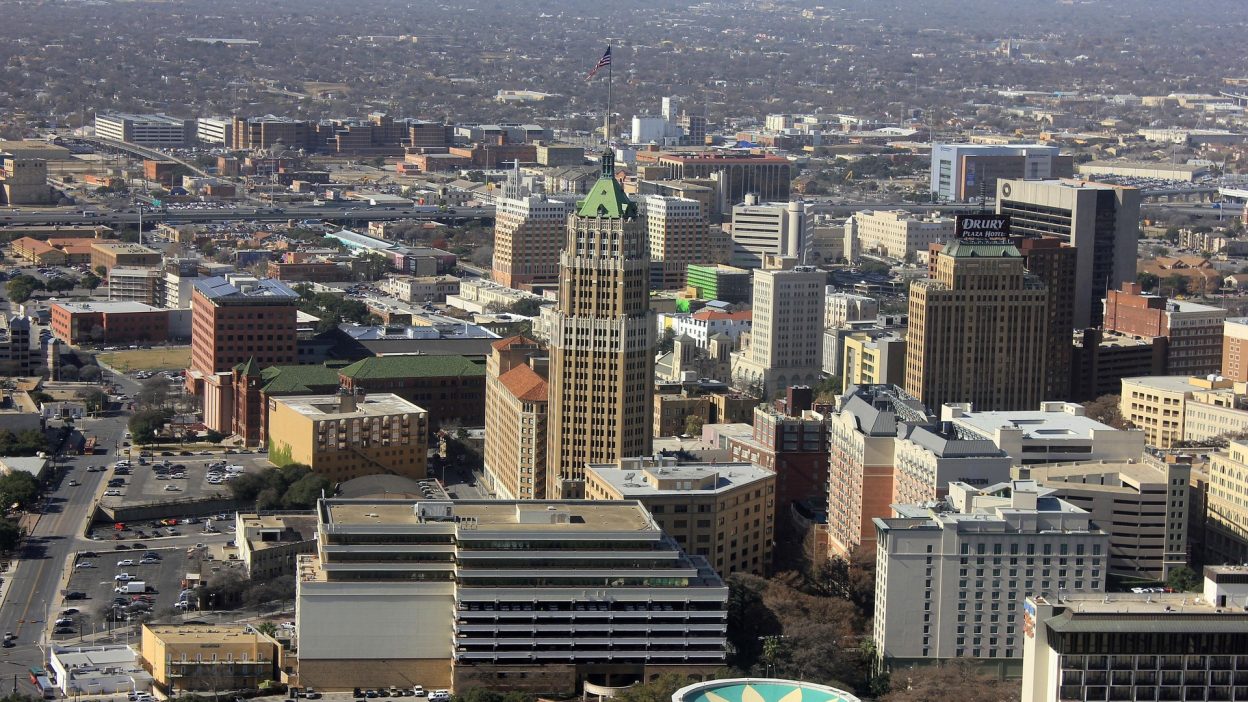A Devastating Tragedy That Exposed The City’s Fatal Flaws
The 1921 San Antonio Floods: A Catastrophe Shaped by Nature and Human Error
The San Antonio Floods of September 1921 stand as one of the most destructive events in the city’s history, leaving an indelible mark on its development. The torrential rainfall caused massive flooding, but the question remains: Was the disaster solely a result of natural forces, or did human decisions exacerbate the damage? Many experts believe that while the rainstorm was undoubtedly severe, the inadequate infrastructure and flood management systems in the city played a critical role in amplifying the catastrophe. The lack of preparation and planning for such a significant natural disaster made the situation far worse.
Looking back, it is clear that the city’s rapid growth without addressing its flood risks contributed significantly to the scale of the disaster. While the storm was intense, the flood’s consequences could have been mitigated had there been proper infrastructure in place to handle such a situation. This disaster exposed the deep flaws in the city’s urban planning, causing both immediate destruction and prompting long-term changes.
The Impact of the 1921 San Antonio Flood: The City’s Critical Shortcomings
The San Antonio Flood of 1921 not only left physical damage but also exposed major weaknesses in the city’s infrastructure. As the storm overwhelmed the city, streets and rivers transformed into fast-moving torrents, swallowing entire communities. The city’s drainage systems were underdeveloped and ill-equipped to handle such extreme weather, leading to widespread flooding.
This event also underscored the lack of preparedness for such natural disasters. Although San Antonio had faced flooding before, no one anticipated the severity of this particular storm. The destruction caused by the floods forced the city to rethink its approach to urban planning and flood management, driving significant reforms in the years that followed.
Human Toll of the 1921 San Antonio Flood: Deaths, Injuries, and Losses
- Lives Lost: More than 50 individuals lost their lives during the San Antonio Flood of 1921, with countless others suffering injuries. The floodwaters rose quickly, leaving many with no time to escape. Tragically, many of the victims had no chance of survival, though efforts from emergency responders and local residents helped save many lives.
- Damage to Property and Economy: The destruction of property was widespread, with businesses, homes, and essential infrastructure submerged. The damage amounted to millions of dollars in losses, and it took the city years to recover financially. The economic impact was profound, and the disaster affected both local businesses and citizens alike as they scrambled to rebuild their lives.
- Recovery Efforts: The recovery from the flood was slow but persistent. Community members worked together to clear debris and rebuild their homes. Government aid and support followed, but the process was far from quick. It took several years before the city fully recovered, and the event left a permanent impact on the way the city approached infrastructure planning.
The 1921 San Antonio Floods: Why the City Was Unprepared
The unpreparedness of San Antonio for the 1921 flood was a major contributing factor to the scale of the disaster. Despite previous floods, the city had not updated or reinforced its flood control measures, and the drainage systems were woefully inadequate. The city was simply not ready to handle the extreme rainfall that fell in such a short time.
After the flood, officials faced criticism for not having the foresight to address the growing risks associated with the city’s rapid expansion. While the storm was particularly severe, better urban planning and flood control measures could have significantly reduced the damage and loss of life. This lack of preparedness forced the city to adopt more robust measures for future disaster management.
The 1921 San Antonio Floods: The Disparity in Relief Efforts
In the aftermath of the San Antonio Floods, the response to the crisis raised troubling questions about the fairness of relief efforts. Many minority communities, particularly in low-income areas, faced the worst of the destruction, yet their needs were often overlooked. The disparity in aid distribution revealed the social and racial divides that existed in San Antonio at the time.
Assistance was primarily directed toward wealthier, predominantly white communities, while those in poorer areas were left to fend for themselves. This inequity in the flood’s aftermath serves as a reminder of how racial and economic inequality can shape disaster relief and recovery efforts, further deepening divides in already vulnerable communities.
The 1921 San Antonio Flood: A Turning Point in the City’s Development
The 1921 San Antonio Flood was a pivotal moment in the city’s history. While the immediate loss of life and property was devastating, the event sparked significant changes in the city’s approach to infrastructure and urban planning. The flood demonstrated the city’s need for better flood management and disaster preparedness. In the years following the event, the city began constructing better flood control systems, including dams, reservoirs, and levees, which helped protect San Antonio from future disasters.
Beyond infrastructure, the flood also brought the community together. In the face of such overwhelming destruction, the people of San Antonio united to rebuild, creating a stronger, more resilient city. Although the memory of the flood was painful, it ultimately led to changes that would safeguard the city for generations to come.
Could the San Antonio Floods of 1921 Have Been Prevented?
- Urban Planning Failures: The lack of proper urban planning contributed to the catastrophic outcome of the flood. If the city had taken into account the risks associated with rapid growth and urban sprawl, flood prevention measures could have been put in place before the storm hit.
- Lack of Early Warning: The absence of an early warning system made it difficult for people to evacuate in time. Had there been a system in place to alert residents of the impending disaster, many lives could have been saved.
- Outdated Infrastructure: The city’s infrastructure, particularly the drainage systems, were insufficient to cope with the heavy rainfall. An upgraded, modern system could have mitigated much of the damage caused by the flood.
The Role of Government in the 1921 San Antonio Flood Response
The response to the 1921 San Antonio Flood raised questions about the role of both local and federal governments. While local authorities did their best to provide immediate assistance, their lack of preparedness meant that many lives were lost. The absence of a coordinated, organised emergency response system contributed to the chaos in the aftermath.
The federal government’s role in recovery was limited, and many residents felt abandoned in their time of need. The flood forced the city to rethink its approach to disaster management, and it highlighted the importance of having a structured, effective government response to future crises.
Rebuilding San Antonio After the 1921 Flood: The Long Path to Recovery
The recovery from the 1921 San Antonio Flood was a lengthy process that took years to complete. In the days and weeks following the flood, the city faced widespread destruction. Homes, businesses, and entire neighbourhoods were devastated by the water, leaving many families displaced. Recovery efforts involved clearing debris, rebuilding homes, and restoring infrastructure, and the scale of the task was overwhelming.
However, the recovery also brought about significant changes in the city’s infrastructure. San Antonio’s experience with the flood led to the implementation of more advanced flood control systems, ensuring that the city would be better prepared in the future. The rebuilding process, while slow, ultimately shaped San Antonio into a more resilient city, prepared for future challenges.
Conclusion: How the 1921 San Antonio Flood Shaped the City’s Future
The 1921 San Antonio Flood remains a defining moment in the city’s history. Its devastating effects brought about significant changes in the city’s approach to urban planning, infrastructure, and disaster preparedness. The lessons learned from the flood prompted improvements in flood control, making San Antonio more resilient to future natural disasters.
The flood’s legacy continues to shape the city’s policies today, as San Antonio works to ensure that such a disaster never happens again. Though the memories of the flood remain, the city has emerged stronger and more prepared to face future challenges, having learned from the devastating mistakes of the past.
5 Short FAQs
- How many people died in the 1921 San Antonio Floods?
Over 50 people died, with numerous others injured and displaced due to the devastating floods. - What caused the 1921 San Antonio Flood?
The storm caused extreme rainfall, and the city’s inadequate drainage systems led to widespread flooding. - Could the flood have been prevented?
Better urban planning, early warning systems, and updated infrastructure could have reduced the flood’s impact. - How long did it take for San Antonio to recover from the flood?
Recovery took years, as the city worked to rebuild homes, businesses, and infrastructure. - What lessons did San Antonio learn from the 1921 Floods?
The disaster prompted the city to invest in improved flood management systems, better urban planning, and more effective disaster response strategies.
References:
“The 1921 flood caused death, destruction, new regulations”
“September 1921 San Antonio floods”
“Washed Over: The Flood of 1921 and San Antonio’s Westside”
“San Antonio River Walk & Flood Control System”




